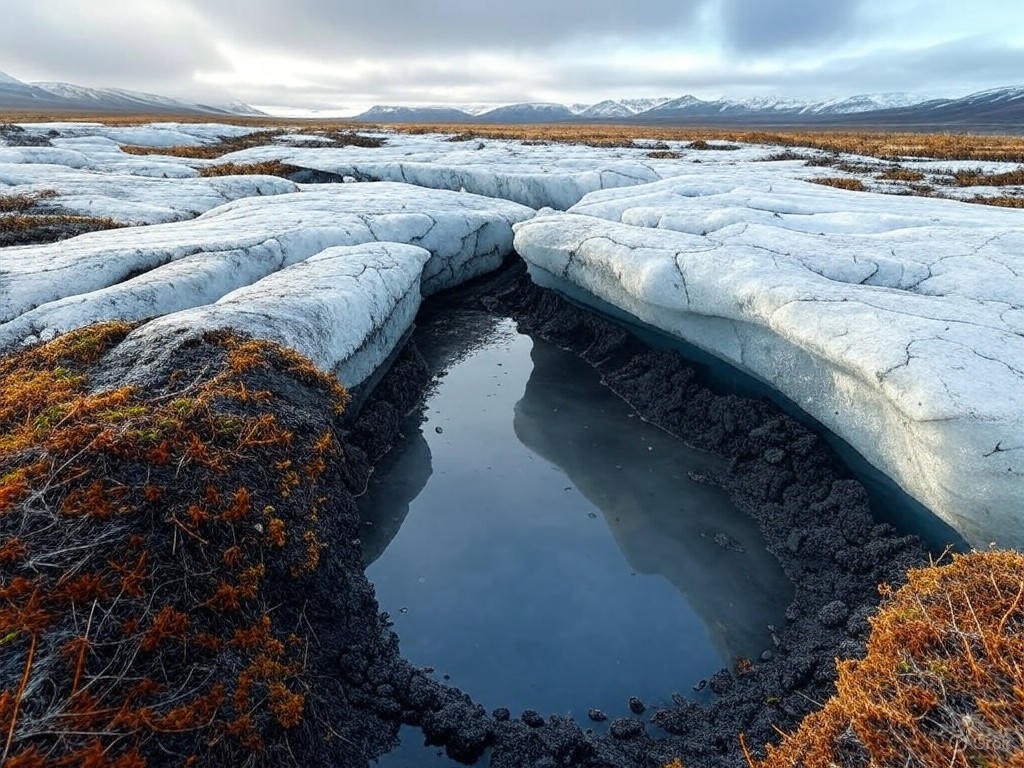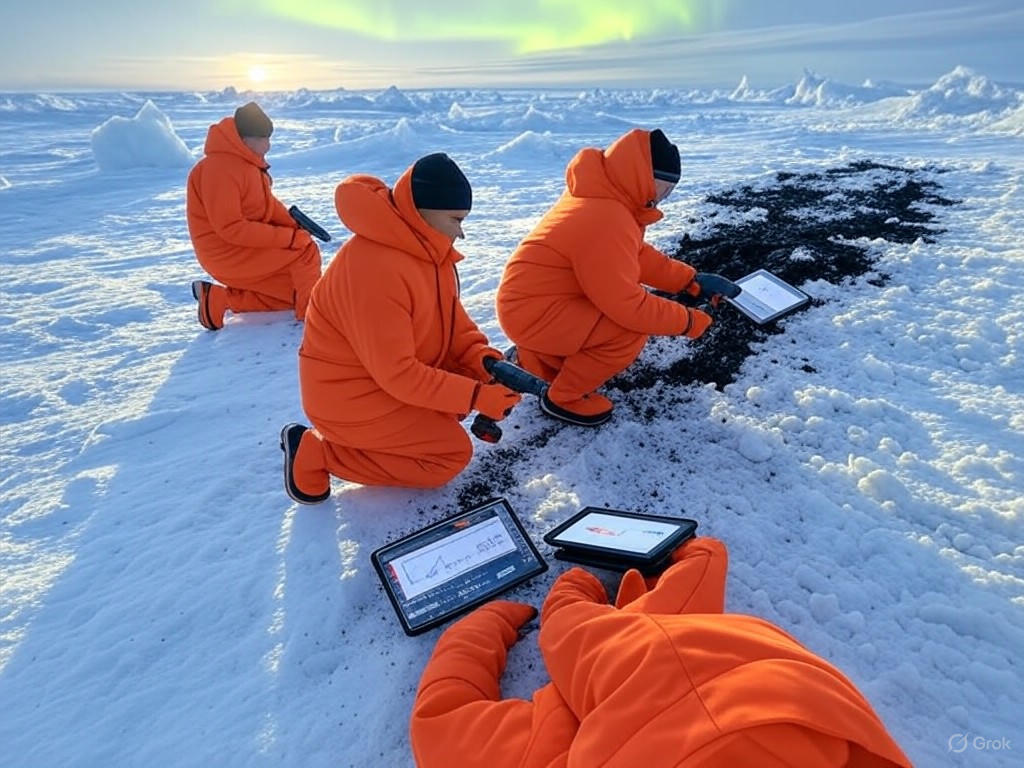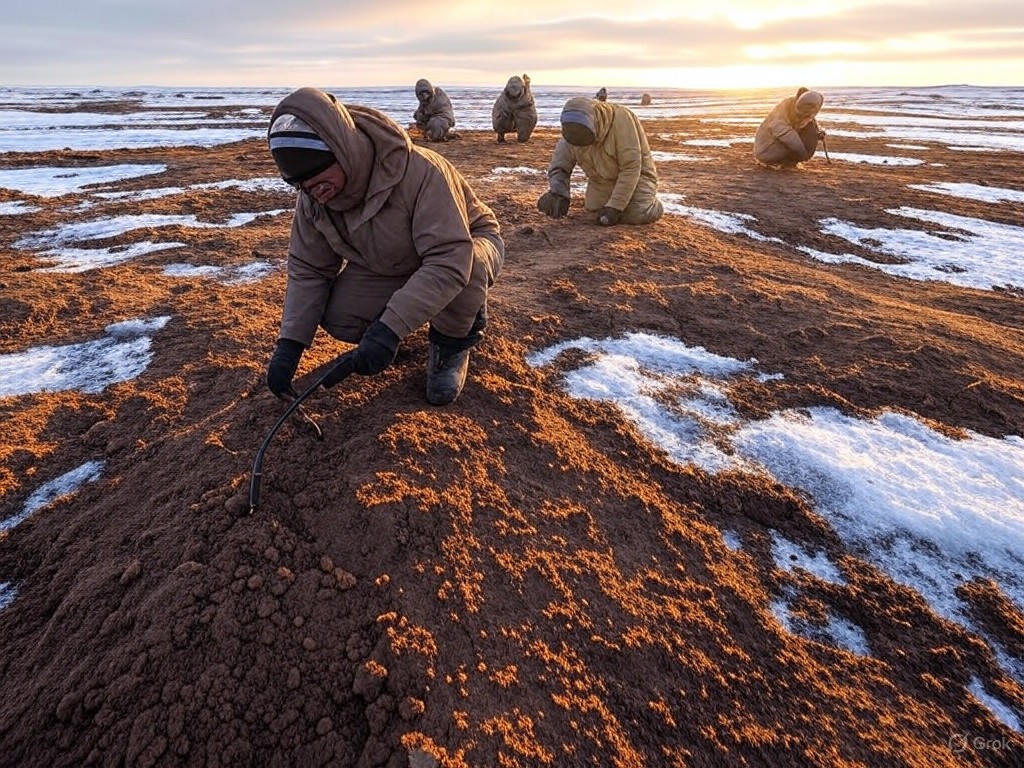Permafrost Thaw Studies: Arctic Climate Impacts
In the vast, icy expanses of the Arctic, where silence reigns and the earth holds ancient secrets, a subtle yet profound transformation is underway. Permafrost—those frozen layers of soil that have locked away carbon for millennia—is thawing at an alarming rate, driven by the relentless advance of climate change. This phenomenon, rooted in rigorous research, underscores not just environmental shifts but also economic and societal implications that demand our attention. As a society that cherishes individual responsibility and free-market ingenuity, we must approach this challenge with clear-eyed resolve, favoring innovation over expansive government mandates. Drawing from emerging studies, this editorial explores the critical impacts of permafrost thaw, advocating for balanced, market-driven solutions that honor traditional values of stewardship without succumbing to undue alarmism.
Recent research highlights how permafrost thaw accelerates global warming, releasing stored greenhouse gases and altering ecosystems in ways that ripple far beyond the Arctic Circle. According to a comprehensive analysis by the National Oceanic and Atmospheric Administration (NOAA), the Arctic is warming at more than twice the rate of the global average, a trend that exacerbates permafrost degradation NOAA Arctic Report Card. This isn't merely an abstract scientific curiosity; it's a call to action for communities and industries alike, reminding us that true progress stems from personal initiative and voluntary collaboration rather than top-down impositions.
The Science of Permafrost: Unlocking Nature's Deep Freeze
Permafrost, a frozen mix of soil, ice, and organic matter, covers nearly a quarter of the Northern Hemisphere's land surface, predominantly in the Arctic. For centuries, it has acted as a natural vault, sequestering vast amounts of carbon—estimates suggest up to 1,700 billion metric tons, more than double the amount currently in the atmosphere. But as climate patterns shift, this vault is cracking open. Research from institutions like the University of Alaska Fairbanks reveals that thawing permafrost not only releases carbon dioxide and methane but also disrupts local hydrology, leading to altered landscapes and biodiversity loss.

A dramatic aerial view of the Arctic tundra, where once-solid permafrost now reveals sinking terrain and exposed organic matter, illustrating the subtle yet transformative effects of climate-driven thaw.
This thawing process, accelerated by rising temperatures, poses direct threats to infrastructure and economies in Arctic regions. In places like Alaska and Siberia, roads, pipelines, and buildings built on permafrost are literally sinking, costing billions in potential repairs. A 2022 study published in Nature Geoscience emphasizes that these changes could amplify feedback loops in the climate system, where released methane—a potent greenhouse gas—further warms the planet Nature Geoscience Permafrost Study. Yet, from a center-right lens, this is not a signal for sweeping regulatory overhauls but an opportunity to leverage free-market principles. Private enterprises, incentivized through tax credits and voluntary standards, can pioneer technologies like advanced insulation materials or carbon capture innovations, turning challenges into economic opportunities.
Analyzing the Impacts: Economic and Environmental Ripples
The environmental consequences of permafrost thaw extend beyond the Arctic, influencing global climate patterns and resource availability. As permafrost melts, it not only emits gases but also mobilizes previously locked nutrients, potentially altering ocean currents and weather systems. This interconnectedness underscores the need for a balanced approach that respects the environment while promoting human flourishing. Research from the Arctic Council, a collaborative body of eight nations, indicates that indigenous communities in the region are already adapting to these changes through traditional knowledge and local innovations Arctic Council Permafrost Report.
Economically, the thaw presents both risks and rewards. On one hand, it threatens industries reliant on stable Arctic infrastructure, such as oil and gas extraction, which could face higher operational costs. On the other, it opens avenues for market-based adaptation. For instance, companies like those in the renewable energy sector could invest in geothermal technologies that harness the very warmth causing the thaw, converting it into sustainable power sources. The Wall Street Journal has highlighted how private investments in Arctic infrastructure could yield returns through enhanced shipping routes in a less icy Northwest Passage, provided we maintain a framework of limited government interference Wall Street Journal Arctic Trade Analysis.
In this narrative, the key is individual and corporate responsibility. Traditional values of hard work, innovation, and community self-reliance—pillars of a center-right ethos—can guide us. Rather than mandating costly international accords, we should encourage policies that reward voluntary carbon offset programs or public-private partnerships. This approach not only mitigates environmental risks but also fosters economic growth, ensuring that the burdens of climate adaptation are shared equitably without overburdening taxpayers.

Scientists meticulously sampling thawing permafrost in the remote Alaskan wilderness, capturing the hands-on effort behind critical climate research that informs global strategies.
Evidence from ongoing studies reinforces this balanced view. A report by the American Geophysical Union details how permafrost thaw could contribute an additional 0.4 to 0.6 degrees Celsius to global warming by 2100, depending on emission scenarios AGU Permafrost Feedback Report. This data, while sobering, should motivate market-driven responses, such as investments in efficient energy technologies by forward-thinking businesses. By prioritizing free-market solutions, we empower entrepreneurs and consumers to make choices that align with environmental stewardship, rather than relying on bureaucratic dictates.
Charting a Path Forward: Innovation and Responsibility
As we conclude, the thawing of Arctic permafrost serves as a stark reminder of our interconnected world, where climate research illuminates both perils and possibilities. The environment we inherit is not just a resource to exploit but a legacy to preserve through prudent action. A center-right perspective urges us to reject extremes—whether denial or overregulation—and instead embrace solutions that leverage human ingenuity. Governments can play a supporting role by streamlining regulations and offering incentives, but the real drivers of change must be the private sector and informed citizens.
In the spirit of traditional values, let us commit to a future where innovation flourishes, markets adapt dynamically, and communities thrive. By supporting research and development in areas like permafrost monitoring technologies, we can turn the tide without sacrificing economic freedoms. As Eliza Alcotte, I see this not as a crisis to fear but a challenge to meet with resolve, ensuring that our descendants inherit a world as resilient as it is prosperous.

